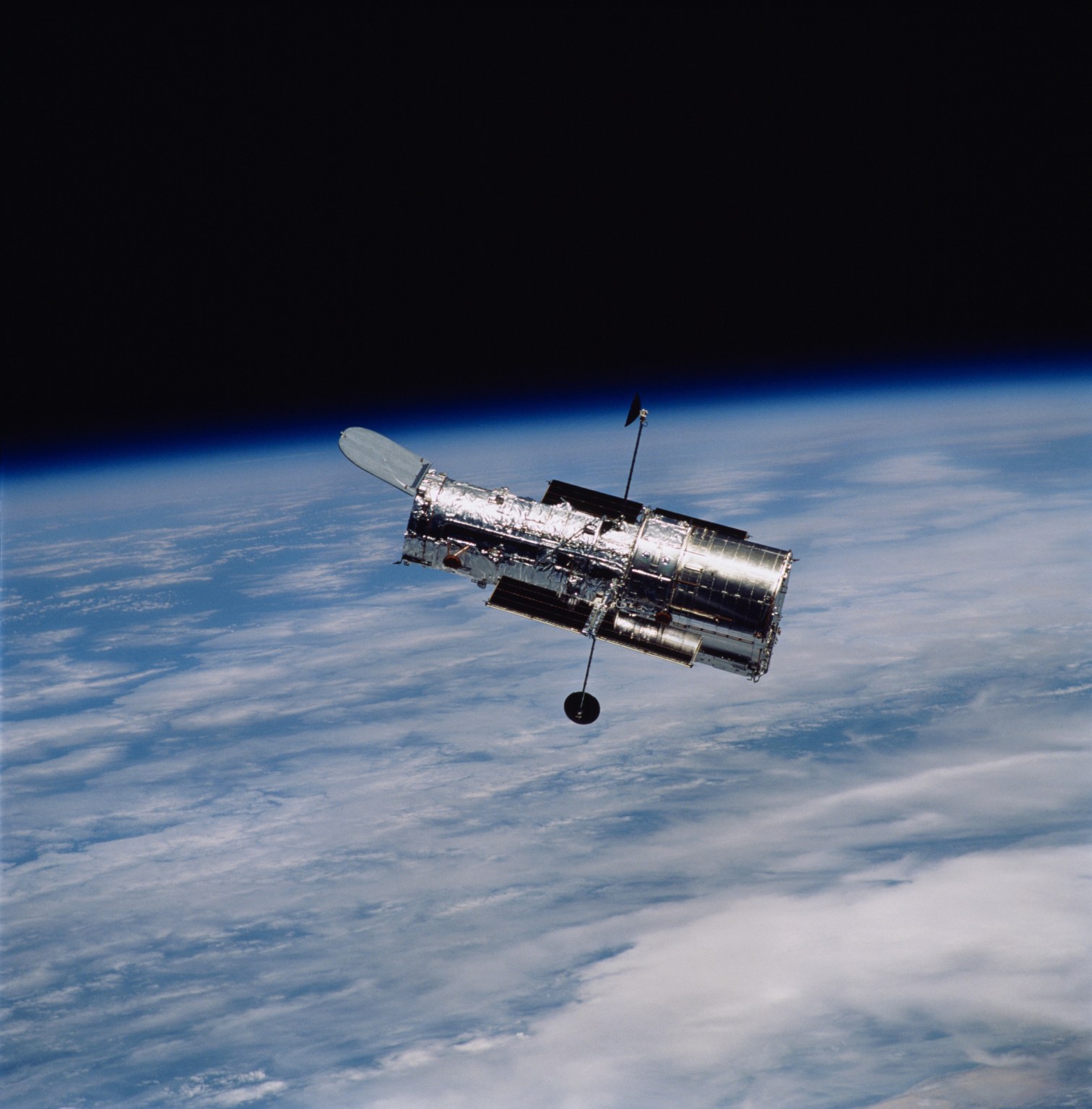1 min read
A Really Cool Star: The Dim, Low-Temperature GL 105C

This is a Hubble Space Telescope picture of one of the least massive and coolest stars even seen (upper right). It is a diminutive companion to the K dwarf star called GL 105A (also known as HD 16160) seen at lower left. The binary pair is located 27 light-years away in the constellation Cetus.
Based on the Hubble observation, astronomers calculate that the companion, called GL 105C, is 25,000 times fainter than GL 105A in visible light. If the dim companion were at the distance of our Sun, it would be only four times brighter than the full moon.
The Hubble observations confirm the detection of GL 105C last year by David Golimowski and his collaborators at Palomar Observatory in California. Although GL 105C was identified before, the Hubble view allows a more precise measurement of the separation between the binary components. Future Hubble observations of the binary orbit will allow the masses of both stars to be determined accurately.
The Palomar group estimates that the companion's mass is 8-9 percent of the Sun's mass, which places it near the theoretical lower limit for stable hydrogen burning. Objects below this limit, called brown dwarfs, still "shine" - not by thermonuclear energy, but by the energy released through gravitational contraction.
Two pictures, taken with Hubble's Wide Field Planetary Camera 2 (in PC mode) through different filters (in visible and near-infrared light) show that GL 105C is redder, hence cooler than GL 105A. The surface temperature of GL 105C is not precisely known, but may be as low as 2,600 degrees Kelvin (4,200 degrees Fahrenheit).
This image was taken in near-infrared light, on January 5, 1995. GL 105C is located 3.4 arc seconds to the west-northwest of the larger GL 105A. (One arc second equals 1/3600 of a degree.) The bright spikes are caused by diffraction of light within the telescope's optical system, and the brighter white bar is an artifact of the CCD camera, which bleeds along a CCD column when a relatively bright object is in the field of view.
These observations are part of a Guaranteed Time Observing Program for which William Fastie (the Johns Hopkins University, Baltimore, MD) and Dan Schroeder (Beloit College, Beloit, WI) were co-principal investigators.
About the Object
- R.A. PositionR.A. PositionRight ascension – analogous to longitude – is one component of an object's position.02h 36m 4.89s
- Dec. PositionDec. PositionDeclination – analogous to latitude – is one component of an object's position.06° 53' 12.73"
- Object NameObject NameA name or catalog number that astronomers use to identify an astronomical object.GL 105A, HD 16160, GL 105C
- Release DateSeptember 14, 1995
- Science ReleaseHubble Spies a Really Cool Star
- CreditCredit: D. Golimowski (Johns Hopkins University), and NASA
Share
Details
Last Updated
Aug 17, 2025
Contact
Media
Claire Andreoli
NASA’s Goddard Space Flight Center
Greenbelt, Maryland
claire.andreoli@nasa.gov






























